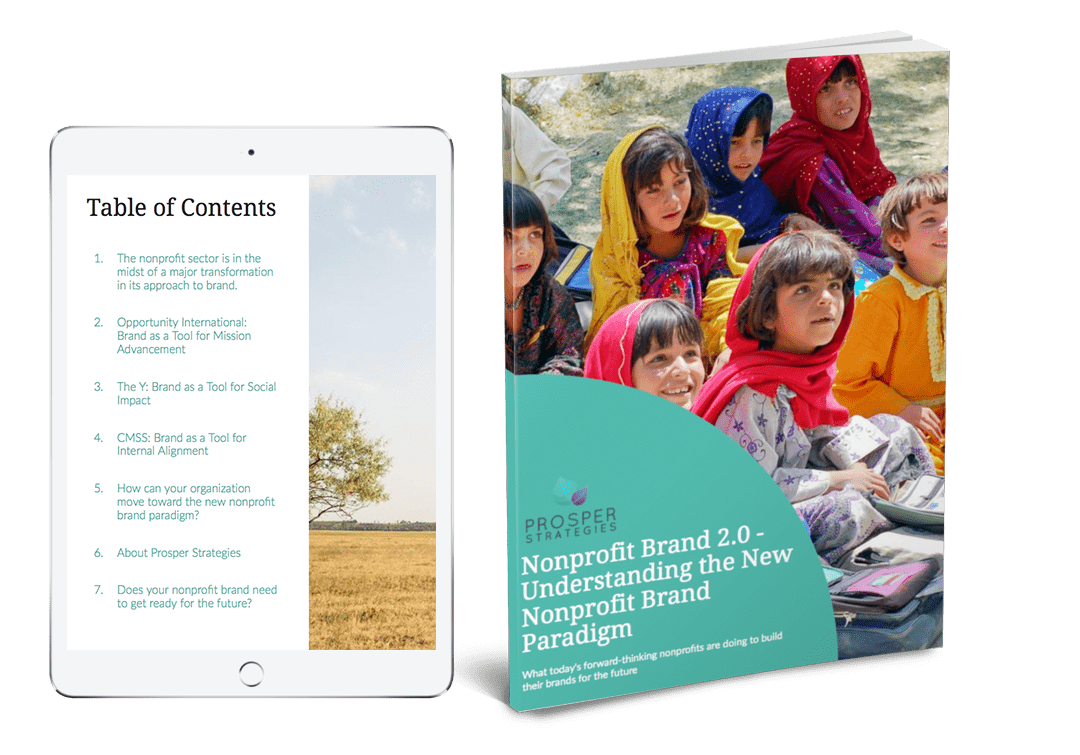Nonprofits have been thinking far too small about marketing for far too long. And it’s hard to blame them.
To date, the majority of models offered to nonprofits for building their brands and improving their marketing have been poor adaptations of models that were born and bred in the private sector. These models confine marketing to the realm of fundraising, when in reality, marketing can and should be leveraged for so much more. When approached strategically, marketing can be a true engine for mission impact across all aspects of a nonprofit.
The careless application of for-profit strategies to nonprofit problems isn’t the only problem, either. There is still a pervasive misconception that the best measure of a nonprofit’s performance is the percentage of expenses that go to “overhead.” As a result, the pressure from donors and funders to minimize administrative, fundraising and marketing expenses is still extremely high. This causes many nonprofits to underinvest in marketing, and in turn, they fail to realize their true potential to drive change.
It’s clearly time for a transformation.
[bctt tweet=”There is still a pervasive misconception that the best measure of a #nonprofit’s performance is the percentage of expenses that go to “overhead.”” username=”ProsperStrat”]Will you join us as we embark on the challenging but important task of busting long-held myths about the role marketing should play in the nonprofit sector? You can start today by sharing these three nonprofit marketing myths with your colleagues in the sector.
Myth 1: Marketing is Only for Fundraising.
Ask an average donor or funder why a nonprofit should pursue marketing, and nine times out of ten, you’ll get the same answer: to raise money. While fundraising goals are some of the most important goals that marketing supports, they’re certainly not the only ones.
As Nathalie Laidler-Kylander and Julia Shepard Stenzel put it in their book The Brand IDEA, a nonprofit’s brand is “a strategic asset central to the success of the organization itself,” and the same can be said of marketing as a whole. Marketing and branding can and must be approached from a broader perspective, and leveraged to drive purpose alignment, internal cohesion, talent acquisition, program participation, issues advocacy, community involvement and so much more.
Part of the reason that marketing has historically been confined to the realm of fundraising is the fact that so many nonprofit marketers (and even more of the consultants and agencies that serve them) come from private sector backgrounds where the purpose of marketing is to drive revenue. It’s understandably difficult for these groups to imagine marketing goals that do not have a direct financial return on investment.
[bctt tweet=”While #fundraising goals are some of the most important goals that #marketing supports, they’re not the only ones.” username=”ProsperStrat”]We need and are committed to building models that help the sector think beyond fundraising and recognize the impact marketing can have on a wide variety of nonprofit goals.
Myth 2: Nonprofits Need to Approach Marketing Like Businesses
It’s time for that old refrain that “nonprofits need to think like businesses,” to die. It’s offensive, and more importantly, it’s not helpful.
Yes, there are many great lessons the social sector can learn from the private sector when it comes to innovation, earned revenue generation and risk taking, just as there are many lessons businesses can learn from nonprofits.
But nonprofits are unique and complex entities that need and deserve their own set of standards, models and tools for pursuing their goals, including their marketing goals. These models and standards need to recognize the multiplicity of value propositions a nonprofit must communicate about and the variety of diverse stakeholders it must communicate those value propositions to. They must recognize the unique approach smart nonprofits take to establishing their positioning in the minds of stakeholders, which typically emphasizes collaboration over competition. They must recognize the funding challenges nonprofits face. And most importantly, they must recognize that unlike a traditional business, a nonprofit’s performance cannot be reduced in a single financial metric, and its approach to marketing therefore cannot be reduced to focus on a single financial aim.
[bctt tweet=”There are many great lessons the social sector can learn from the private sector, just as there are many lessons #businesses can learn from #nonprofits.” username=”ProsperStrat”]We need to stop carelessly applying the same marketing methods that work for the private sector to the unique challenges nonprofits face and give nonprofits what they really deserve: proven marketing models that are created with their unique needs in mind.
Myth 3: Marketing Expenses are Irresponsible Overhead
The groups behind the Overhead Myth have done so much to correct the false conception that the best measure of a nonprofit’s performance is its ratio of “overhead” expenses.
They’ve asked nonprofit donors, funders and leaders to “pay attention to other factors of nonprofit performance: transparency, governance, leadership, and results,” and hold that smart investments in training, planning, strategy, talent, evaluation, systems, and fundraising are necessary for nonprofits to ensure their sustainability and improve themselves.
But we still have a long way to go. We need to help donors, funders and leaders recognize and truly believe that nonprofits cannot achieve their full potential for impact without effective marketing. Until that understanding develops, nonprofits will continue to struggle against grant requirements and donor preferences that force them to minimize or completely eliminate their marketing investments.
[bctt tweet=”We need to help #donors, funders and leaders recognize and truly believe that #nonprofits cannot achieve their full potential for #impact without effective #marketing. ” username=”ProsperStrat”]This is just the beginning.
Changing the way the world thinks about marketing in the nonprofit sector is going to take time, effort, and a great deal of collective action from organizations like yours. But the needs for the services provided by nonprofits like yours are growing faster than ever, and the need for this kind of transformation has never been more apparent. The causes and communities you serve depend on it.

Katie Diveley contributed to this blog post.